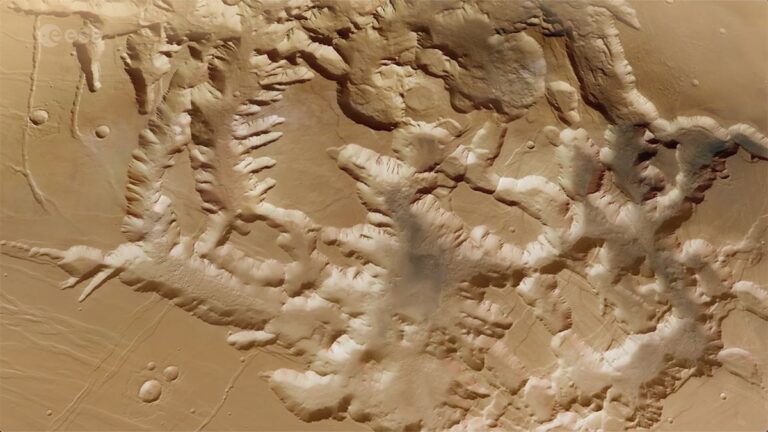
[ad_1]
A new video has you flying like a Martian over a huge canyon.
New footage from the European Space Agency’s longstanding Mars Express mission showcases a huge valley system on Mars that stretches the length of Italy.
The video shows a vast complex known as Noctis Labyrinthus, a nearly 745-mile-long (1,190 kilometers) valley system sandwiched between the more famous Valles Marineris and a huge volcano system, in the Tharsis region.
“The highest plateaus seen here represent the original surface level before chunks of surface fell away,” ESA officials wrote in a statement. “In many places, gigantic landslides can be seen covering the valley slopes and floors, while other valley slopes show large dune fields created by sands blown both down and upslope by martian winds.”
Related: See Mars like never before in this amazing new photo from a 20-year-old probe

Mars Express and its high-resolution stereo camera, which took the footage, have been operating at the planet since 2003. Especially scientifically useful in the video are lowered regions of crust known as graben, which are depressed compared to the surroundings.
These graben are an indication of the Red Planet’s volcanic past, ESA officials wrote. “The intense volcanism in the nearby Tharsis region is to blame for the formation of these features. This volcanism caused large areas of Martian crust to arch upwards and become stretched and tectonically stressed, leading to it thinning out, faulting and subsiding.”
Mars Express and a fleet of other spacecraft from a variety of nations orbit the Red Planet to keep an eye on the planet’s weather and to make observations that could shed light on its complicated past.
Mars’ atmosphere was once so thick, many scientists say, that water used to run on the planet’s surface. But the thin air and high radiation on the surface today would make it tough for organisms to survive on modern Mars — unless they live underground.
Surface missions, such as NASA’s Curiosity and Perseverance rovers, also scrutinize the Martian landscape up close, giving us great looks at the Red Planet.
[ad_2]